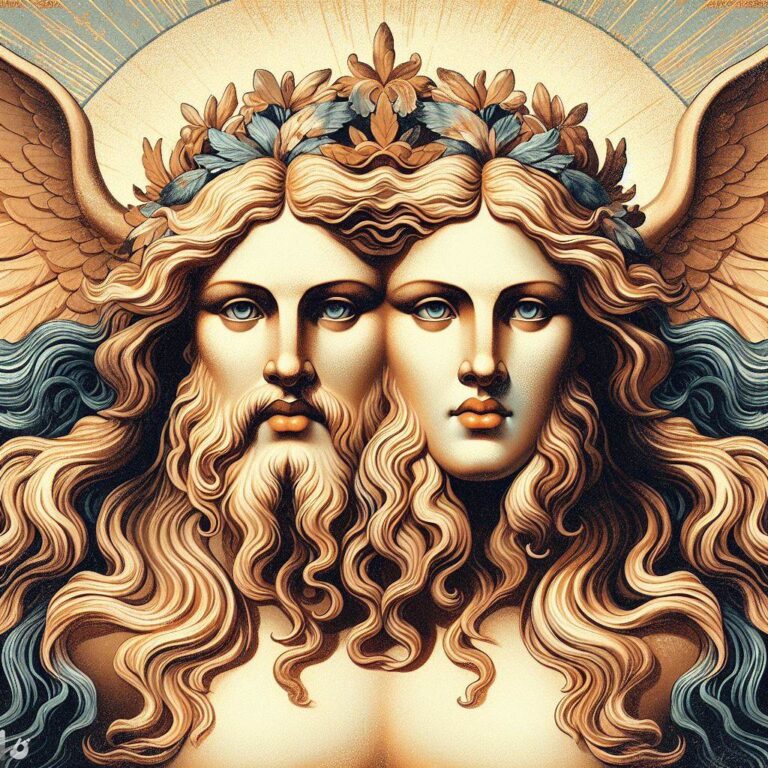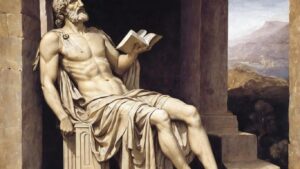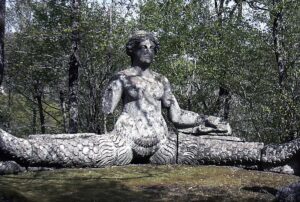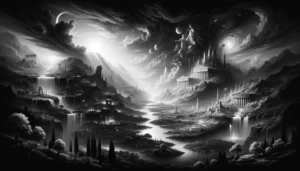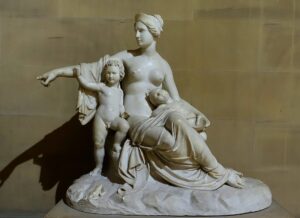Table of Contents
Hermaphroditus is a figure in Greek mythology associated with a dual nature, combining both male and female characteristics. The most well-known myth featuring Hermaphroditus involves a union of two deities: Hermes, the messenger of the gods, and Aphrodite, the goddess of love and beauty.
Family
Hermaphroditus is the child of two major deities:
Hermes: Hermaphroditus is the son of Hermes, who is the messenger of the gods in Greek mythology. Hermes is known for his swiftness and cunning, and he serves as a link between the divine and mortal realms.
Aphrodite: Aphrodite, the goddess of love and beauty, is the mother of Hermaphroditus. She is one of the twelve Olympian deities and plays a significant role in various myths, often associated with love, desire, and fertility.
The myth does not typically mention any siblings for Hermaphroditus. Therefore, based on the traditional accounts, Hermaphroditus is not portrayed as having any direct siblings in the context of this particular myth. The narrative tends to focus on Hermaphroditus’ unique characteristics and the circumstances of their birth and transformation, rather than detailing a broader family structure.
The myth of Hermaphroditus

The myth of Hermaphroditus is primarily centered around his transformation and the merging of his being with the nymph Salmacis. Here are the details of the myth:
Birth and Early Life:
Hermaphroditus is born to the god Hermes and the goddess Aphrodite, making him a deity with divine parentage.
Rather than being raised by his parents, Hermaphroditus resides at Mount Ida, a sacred mountain in present-day Turkey, where nymphs care for him.
Extraordinary Beauty and Travels:
Hermaphroditus grows up to be incredibly handsome and becomes aware of the power his looks hold.
At the age of fifteen, he embarks on a journey, exploring different regions, including Lycia and Caria.
Encounter with Salmacis:
While in Caria, Hermaphroditus explores a wooded area near Halicarnassus and discovers a pool.
Salmacis, a nymph residing in the pool, becomes enamored with Hermaphroditus due to his beauty.
Salmacis attempts to seduce Hermaphroditus, but he rejects her advances.
The Transformation:
Hermaphroditus undresses to bathe in the pool, thinking Salmacis has left.
Unseen by Hermaphroditus, Salmacis hides behind a tree, then suddenly embraces him in the pool.
Despite Hermaphroditus’ struggles, Salmacis calls upon the gods, asking for an eternal connection.
Divine Intervention:
The gods grant Salmacis’s wish, but instead of a simple union, Hermaphroditus and Salmacis are transformed into one being.
Their bodies merge, resulting in Hermaphroditus possessing both male and female features.
Consequences and Grief:
Hermaphroditus, now a being of both sexes, loses his former beauty and faces rejection from the world.
In grief, Hermaphroditus asks his parents, Hermes and Aphrodite, to curse the pool, ensuring anyone who enters would undergo a similar transformation.
Becoming the God of Hermaphrodites:
Hermes and Aphrodite agree to Hermaphroditus’s request, cursing the pool.
Hermaphroditus becomes associated with hermaphrodites and effeminates, taking on a role within the divine hierarchy.
The myth of Hermaphroditus explores themes of transformation, the consequences of desire, and the blending of opposites within a single being. It has inspired various artistic representations throughout history and serves as a poignant narrative in Greek mythology.
Modern culture
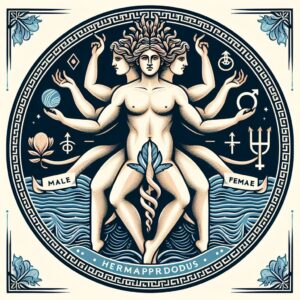
Art and Literature:
Artworks by contemporary artists may draw inspiration from classical mythology. Look for paintings, sculptures, or illustrations that explore themes of androgyny or transformation.
Literary Adaptations:
Authors may incorporate characters inspired by Hermaphroditus or explore similar themes in their works. For example, works of speculative fiction or fantasy may feature characters with androgynous qualities.
Popular Culture:
While not directly named, characters with androgynous features or themes of gender fluidity may appear in movies, TV shows, or video games. For instance, characters in fantasy or science fiction settings that challenge traditional gender norms.
Gender and LGBTQ+ Movements:
Discussions within the gender and LGBTQ+ movements may touch upon the broader themes associated with Hermaphroditus, such as the fluidity of gender identity and expressions.
Academic Discussions:
Scholarly articles and discussions in the fields of classical mythology, gender studies, and psychology may delve into the symbolism and significance of Hermaphroditus. These discussions may take place in academic journals, conferences, or online platforms.
Fashion and Design:
Designers in the fashion industry may draw inspiration from androgynous or gender-fluid aesthetics, echoing themes associated with Hermaphroditus. This influence can be seen in clothing designs that challenge traditional gender norms.
Music and Lyrics:
Some musicians may incorporate mythological themes into their lyrics or visual presentations. Look for songs or music videos that explore concepts of transformation, identity, or duality.
It’s important to note that while Hermaphroditus may not be explicitly mentioned, the themes associated with this figure, such as androgyny, transformation, and the merging of dualities, continue to influence and inspire various aspects of modern culture in nuanced ways.
FAQ
What is the myth of Hermaphroditus about?
The myth of Hermaphroditus revolves around his extraordinary beauty, travels, and encounter with the nymph Salmacis. After rejecting Salmacis's advances, Hermaphroditus is merged with her through divine intervention, becoming a being with both male and female features.
What are the themes associated with Hermaphroditus?
Themes associated with Hermaphroditus include androgyny, transformation, the consequences of desire, and the blending of opposites within a single being.
Are there any modern representations of Hermaphroditus?
While direct references may be rare, the broader themes associated with Hermaphroditus, such as androgyny and transformation, can be found in art, literature, discussions on gender and sexuality, and possibly in popular culture.
How is Hermaphroditus portrayed in art and literature?
Hermaphroditus may be depicted in art and literature exploring themes of androgyny and transformation. Artists and authors may draw inspiration from classical mythology to create contemporary interpretations.
Is Hermaphroditus associated with LGBTQ+ themes?
Hermaphroditus's myth, with its themes of androgyny and transformation, has been discussed in the context of gender studies and LGBTQ+ themes, particularly regarding the fluidity of gender identity.
What is the significance of Hermaphroditus in Greek mythology?
Hermaphroditus symbolizes the merging of male and female qualities and serves as a representation of the consequences of desire. The myth explores themes of transformation and the interconnectedness of opposing forces.
Does Hermaphroditus have any siblings?
In some genealogies, Hermaphroditus is mentioned as a child of Hermes and Aphrodite, making him a half-brother to Eros (Cupid), the god of love. However, specific siblings are not a central focus in the myth of Hermaphroditus.
